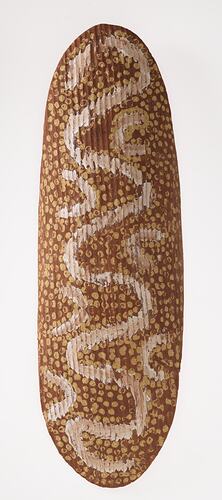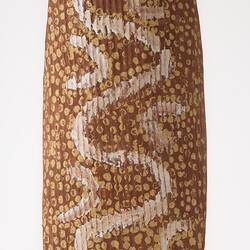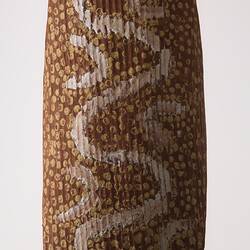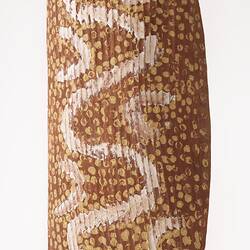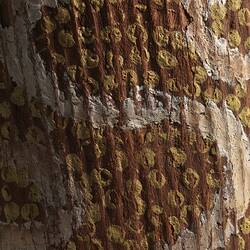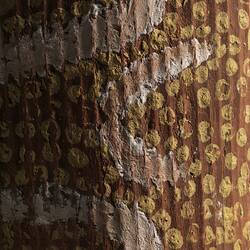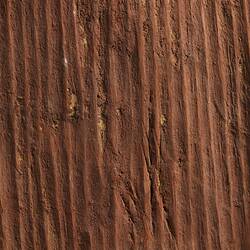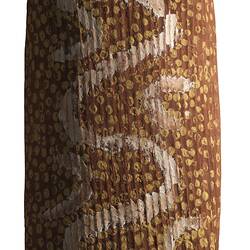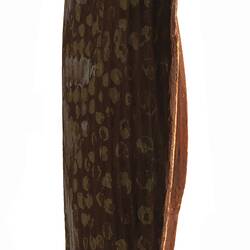Summary
Central Australian shields were made from a light soft wood mostly oval shaped and used to deflect spears or blows from boomerangs in conflict situations. Added strength was given by the handles being part of the structure and cut out of the reverse side. The grooves or fluting is typical of the treatment of the outer surface of shields in the central desert regions, and are classically painted with designs representing the totemic ancestors. The shields are also used in revealing these details of the ancestors to young men in ceremony and displayed during the public stages of their initiation. This particular shield was painted by Nosepeg Tjuparrula; a famous Winanpa/Pintupi man, born near Lake Macdonald in the Western Desert. Nosepeg met Europeans for the first time in the early 1930s and later settled at the missionary outpost of Haasts Bluff. In 1954 he travelled to Brisbane where he was presented to Queen Elizabeth II, introducing himself as 'the king of the Pintupi'. After moving to Papunya in 1960, Nosepeg took up painting where he helped to establish the seminal Papunya Tula Artists Company. This shield is a rare example of his earlier work.
Local Name
Kutitji
Physical Description
An oval shield made from a single piece of softwood (red bean tree) painted with natural pigments. The entire surface has longitudinal fluting of parallel lines and is coated with red ochre. The concave outer surface has curved lines painted in white pipe clay outlined in dots of yellow ochre. The rest of the surface is also covered with yellow dots. The handle is cut out of the reverse side.
Significance
This shield is known as kutitji in the Pintupi-Luritja languages, and was painted by Nosepeg Tjuparrula, a famous Winanpa-Pintupi man born near Lake Macdonald in the Western Desert. Nosepeg met Europeans for the first time in the early 1930s and later settled at the missionary outpost of Haasts Bluff. In 1954 he travelled to Brisbane where he was presented to Queen Elizabeth II and introduced himself as 'the king of the Pintupi'. After moving to Papunya in 1960, Nosepeg took up painting where he helped to establish the seminal Papunya Tula Artists Company. This shield is a rare example of his earlier work.
More Information
-
Object/Medium
Shield
-
Maker
-
Cultural Groups
-
Locality
-
Date Produced
-
Date Collected
-
Overall Dimensions
680 mm (Length), 215 mm (Width), 80 mm (Height)
-
Classification
-
Date Made
-
Maker
-
Clan/Language Group
-
Place Made
-
Indigenous Region
-
Keywords
-
Collection Names
-
Type of item
-
Discipline
-
Category
-
Collecting Areas
